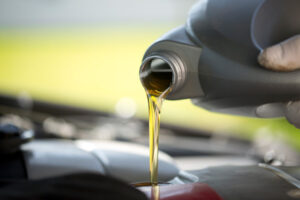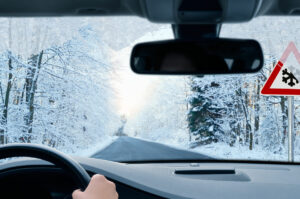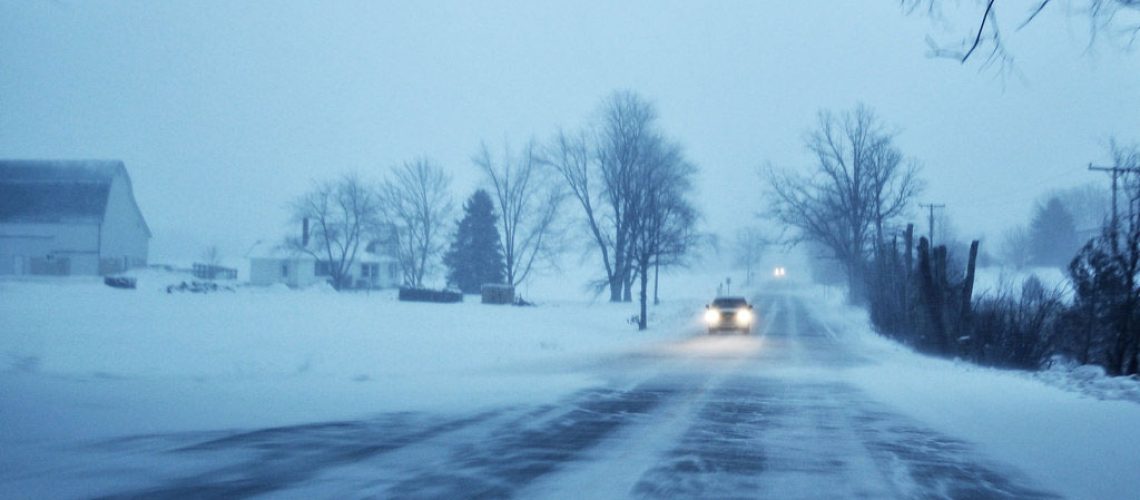Winter weather conditions can be tough on your car, making winter auto maintenance a must. From dead batteries to slippery roads, it’s important to prepare your vehicle for the winter months. Not only is this important for your personal safety, but for the longevity of your vehicle as well.
Don’t let winter end up costing you in Idaho Falls auto body repair services, or worse—a trip to the hospital! Here are 7 winter driving tips to keep your car running smoothly.
Keep the Battery in Good Shape

A car battery that’s in good condition is essential for starting your car in cold weather. If your battery is more than three years old, have it tested to make sure it’s capable of handling the demands of winter.
If it’s time to replace it, have it done before the winter weather sets in. Cold weather can reduce a battery’s charge and make it harder to start the engine, so it’s best to be proactive.
Engine Oil

It’s important to check your engine oil regularly, especially in the winter. The viscosity of oil can change in cold weather, making it thicker and harder to circulate. Thicker oil can reduce engine efficiency, making it harder for your car to start.
Make sure your car has the proper oil for winter conditions, and have the oil changed if necessary.
Have Your Car Serviced for Winter Conditions
Winter weather can cause problems for your car, and a professional service is the best way to make sure it’s running smoothly. Have your car inspected by a mechanic who can check the brakes, suspension, windshield washer fluid, heating and cooling systems. A good mechanic can identify potential problems before they become serious, saving you time and money in the long run.
Tires

Good tires are essential for safe driving in winter weather. Make sure your tires have enough tread and are properly inflated. If you live in an area with heavy snow and ice, consider installing winter tires or all season tires.
Winter tires are designed to handle the harsh conditions of winter and provide better traction, braking, and handling.
Also, be sure to check the tire pressure, as cold temperatures can affect it and make winter driving more unstable.
Replace Wiper Blades
Another important aspect of winter auto maintenance is replacing your wiper blades. Winter weather can be tough on wiper blades, and they can become brittle, crack, or wear out over time. Old wiper blades can leave streaks on your windshield, reducing visibility and making it more difficult to see in inclement weather.
When replacing wiper blades, make sure to choose a winter-specific blade designed to handle the harsh conditions of winter weather. Winter wiper blades are made of a more flexible material that can handle the snow, ice, and sleet that can build up on your windshield. They also have a heavier frame that can provide better support and prevent bending and breaking in cold weather.
It’s a good idea to replace your wiper blades at the beginning of the winter season, before the harsh weather sets in. Make sure to follow the manufacturer’s instructions when installing new wiper blades, and if you’re unsure, consult a professional mechanic.
By replacing your wiper blades, you can ensure that you have clear visibility in winter weather and reduce the risk of an accident on the road.
Clear the Windows

Clear windows are essential for safe driving in winter weather. Snow, ice, and frost can accumulate on your car’s windows, reducing visibility and making it more difficult to see other vehicles, pedestrians, and road signs. Clearing your windows thoroughly before driving can help you stay safe on the road and avoid accidents.
When clearing your windows, make sure to use a scraper or de-icer to remove any snow or ice that may have accumulated on the windshield, side windows, and rear window. You can also use a cloth or paper towel to remove any residual moisture, and make sure to wipe down the outside mirrors and side windows as well.
It’s also important to keep your windows clear while you’re driving. Use your defrost settings to clear any fog or condensation that may form on the inside of the windows, and keep a cloth or paper towel handy in case you need to wipe away any moisture that accumulates.
By clearing your windows thoroughly before driving, you can ensure that you have maximum visibility in winter weather and reduce the risk of an accident on the road. Additionally, keeping your windows clear can also help prevent damage to your car’s interior and electronics caused by moisture buildup.
Assemble a Winter Survival Kit
It’s always a good idea to have a winter survival kit in your car in case of emergencies. A winter survival kit should include items such as a shovel, a bag of sand or kitty litter for traction, a blanket, water and food, a flashlight, and a first-aid kit. In the event of a breakdown or an accident, a winter survival kit can help you stay warm and comfortable while you wait for help to arrive.
Conclusion

In conclusion, taking care of your car in the winter is essential for keeping it running smoothly and safely. From keeping the battery in good shape to assembling a winter survival kit, these 7 winter car care tips can help you stay on the road this winter. Don’t wait until it’s too late, get started on your winter auto maintenance now.
For Idaho Falls auto body services, contact Classic Auto Collision Center today.

